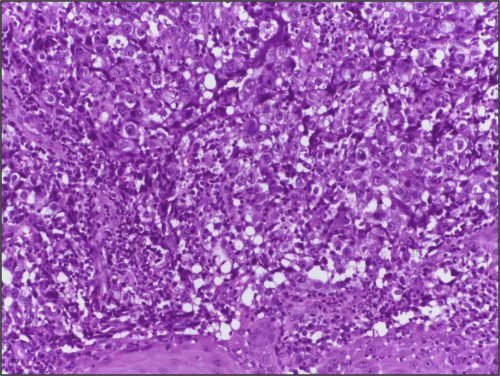Evolutionary game theory, the application of game theory to evolutionary biology, may provide new insights on how cancer behaves. Earlier this year, a team from the Moffitt Cancer Center, led by Artem Kaznatcheev and Jacob G. Scott, who are currently at the University of Oxford and Cleveland Clinic (respectively), studied the effects of certain factors on the evolutionary games played by various cancer cells. Their research suggests that cancer is better understood by looking at the bigger picture, the environment surrounding cancer cells.
In cancer biology, one example of this can be found in drug resistance. Here’s the intuition. Think of a cancer cell as making an investment to gain drug resistance, such as developing efflux pumps or slowing down its metabolism. Cancer cells that don’t invest have an initial advantage since they can devote more resources to growth and reproduction. This is the cost of resistance. However, when a drug is administered, the resistant cells obviously gain the advantage. This is the benefit of resistance. Thus, the benefit of survival–even with drug treatment–can be viewed as a payoff for cancer cells. Naturally, this perspective has important implications for cancer treatment.
For the past few decades, evolutionary game theorists and mathematical oncologists have explored these games using simulations. Principles of computer science are key for designing such simulations. “Evolution is an algorithm,” said Kaznatcheev. Different tissues and types of cells are regarded as objects. With all the code in place, the simulation replicates an environment similar to a cancerous region of the body. However, virtual simulations can encode faulty intuitions that are different from real-life experiments in Petri dishes.
Kaznatcheev’s team analyzed how the presence of fibroblasts and alectinib affected the game dynamic between resistant and sensitive (non-resistant) cells in an experimental system. Fibroblasts, cells in the connective tissue that synthesize collagen, are often coopted by cancer cells to spread the disease; alectinib is a drug used to treat certain types of lung cancer. The team found that when fibroblasts were present without alectinib, resistant and sensitive cells coexisted–the case for most untreated patients. This challenges the long-held intuition about costly drug resistance. In all other combinations of fibroblast and alectinib presence, the balance shifted towards an all-resistant population of cancer cells. While neither situation is beneficial for the patient, oncologists can enhance treatments. For example, adaptive therapy uses gradual doses, first measuring the responses of cancer cells before administering the next dose instead of initially using the maximum tolerable dose.
“In current research,” noted Kaznatcheev, “there is a lot of focus on the individual cells.” Drugs are commonly reductive and targeted to these individual cells. However, Kaznatcheev’s research provides a new understanding of cancer by taking a holistic perspective in viewing the disease, and considering the effects of environmental factors (such as fibroblasts). Furthermore, this research is advancing evolutionary game theory and cancer oncology by demonstrating a method that measures the game dynamics of cancer cells. Future steps include running experiments on mice or organelles, which offer more human-like conditions. Kaznatcheev summarizes this new approach as, “Don’t treat the player, treat the game.”
Link to Nature paper: https://www.nature.com/articles/s41559-018-0768-z

